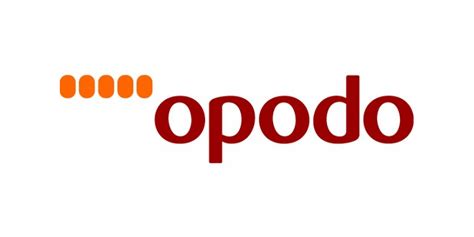Retained Earnings Formula: Definition, Formula, and Example
This is because the http://www.ogk1.com/eng/operation/ are equivalent to the amount of money the company can reinvest into the business. Under normal circumstances, the more money that is reinvested, the more a company can grow. The following is a simple example of calculating retained earnings based on the balance sheet and income statement information. In most cases, it is shown in the entity’s balance sheet, statement of change in equity, as well as a statement of retained earnings.
Why are retained earnings important for small business owners?
Analyst normally investigates further on the reason that makes loss gross profit margin. The portion of retained earning normally uses for reinvestment as we as expended the operations, improve business and product branding, and do more research and developments. For example, technology firms may reinvest more in research and development, resulting in lower retained earnings despite strong growth prospects. Understanding the industry’s norms and dynamics is crucial when interpreting retained earnings. Are you unsure what this earning number represents and how to calculate it?
Retained Earnings vs. Net Income: What is the Difference?
Lack of reinvestment and inefficient spending can be red flags for investors, too.That said, calculating your retained earnings is a vital part of recognizing issues like that so you can rectify them. Remember to interpret retained earnings in the context of your business realities (i.e. seasonality), and you’ll be in good shape to improve earnings and grow your business. Once your cost of goods sold, expenses, and any liabilities are covered, you have to pay out cash dividends to shareholders. The money that’s left after you’ve paid your shareholders is held onto (or “retained”) by the business. If a company decides not to pay dividends, and instead keeps all of its profits for internal use, then the retained earnings balance increases by the full amount of net income, also called net profit.
How to calculate retained earnings (formula + examples)
Additional paid-in capital does not directly boost retained earnings but can lead to higher RE in the long term. Additional paid-in capital reflects the amount of equity capital that is generated by the sale of shares of stock on the primary market that exceeds its par value. Retained earnings (RE) are calculated by taking the beginning balance of RE and adding net income (or loss) and then subtracting out any dividends paid. Dividends are the money a company distributes to its common shareholders. When a company has some earnings surplus, it can choose to give a portion back to its common shareholder in a form of dividends.
While increasing retained earnings may signal financial stability and growth potential, it doesn’t guarantee future success. Economic, industry, and market conditions can change, impacting a company’s performance. Consider other factors, such as market trends and competitive positioning, when making investment decisions. A company’s equity refers to its total value in the hands of founders, owners, stakeholders, and partners.
Management and Retained Earnings
If you see your beginning retained earnings as negative, that could mean that the current accounting cycle you’re in has a larger net loss than your beginning balance of retained earnings. For example, if the dividends a company distributed were actually greater than retained earnings balance, it could make sense to see a negative balance. Movements in a company’s equity balances are shown in a company’s statement of changes in equity, which is a supplementary statement that publicly traded companies are required to show. Both the beginning and ending retained earnings would be visible on the company’s balance sheet.
Benefits of a Statement of Retained Earnings
Revenue on the income statement is often a focus for many stakeholders, but the impact of a company’s revenues affects the balance sheet. If the company makes cash sales, a company’s balance sheet reflects higher cash balances. Companies that invoice their sales for payment at a later date will report this revenue as accounts receivable. http://vo.od.ua/rubrics/raznoe/41287.php refer to the cumulative positive net income of a company after it accounts for dividends. You may use these earnings to further invest in the company or buy new equipment.
Retained Earnings vs. Net Income
On the other hand, https://pritchi.ru/post_5058 is a « bottom-line » reporting account that is only calculated after all other calculations have been settled. Ending retained earnings is at the bottom of the statement of changes to retained earnings which is only assembled after net income (the « true » bottom line) has been determined. Net sales are calculated as gross revenues net of discounts, returns, and allowances. Though gross revenue is helpful in accounting for, it may be misleading as it does not fully encapsulate the activity regarding sale activity. For example, a company may post record-level sales; however, a major recall that resulted in 10% of all sales being returned will have material consequences on net revenue. Gross sales are calculated by adding all sales receipts before discounts, returns, and allowances.
- Companies will also usually issue a percentage of all their stock as a dividend (i.e. a 5% stock dividend means you’re giving away 5% of the company’s equity).
- Ask a question about your financial situation providing as much detail as possible.
- This happens when the company does not have enough profitable growth opportunities to pursue.
- In most cases, it is shown in the entity’s balance sheet, statement of change in equity, as well as a statement of retained earnings.
- There are plenty of options out there, including QuickBooks, Xero, and FreshBooks.
Management, on the other hand, will often prefers to reinvest surplus earnings in the business. This is because reinvestment of surplus earnings in the profitable investment avenues means increased future earnings for the company, eventually leading to increased future dividends. Your company’s equity investors, who are long term investors, will seek periodic payments in the form of dividends as a return on the money invested by them in your company. Retained earnings are usually considered a type of equity as seen by their inclusion in the shareholder’s equity section of the balance sheet. Though retained earnings are not an asset, they can be used to purchase assets in order to help a company grow its business. Additional paid-in capital is included in shareholder equity and can arise from issuing either preferred stock or common stock.





















































































































































































































